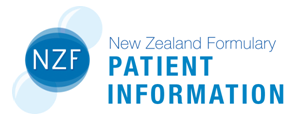What does it do?
Deferoxamine is used to treat conditions where there is too much iron or aluminium in the blood.
Before you start
- Tell your doctor if you have kidney problems.
- Tell your doctor if you are pregnant, planning to become pregnant, or breastfeeding.
How is it given?
Deferoxamine is given as an infusion under the skin or into a vein, or an injection into a muscle.
What if you forget a dose?
Keep your appointment for your deferoxamine injection. If you are unable to attend contact the clinic staff as soon as possible.
Can you take other medicines?
Some medicines available without a prescription may react with deferoxamine including:
- prochlorperazine
- supplements containing aluminium (e.g. Alu-Tab®), iron (e.g. Ferro-Tab®) or vitamin C (e.g. Centrum®)
Tell your pharmacist or doctor about all medicines or treatments that you may be taking, including vitamins, herbal products or recreational drugs.
What side effects might you notice?
| Side Effects | Recommended action |
|---|---|
|
Symptoms of allergy including: skin rash, itching, swelling, trouble breathing Fast or irregular heartbeat Reduced number of blood cells that help your blood to clot - symptoms include: easy or unusual bruising or bleeding Changes in vision Hearing loss, ringing in the ears |
Tell your doctor immediately |
|
Headache Fever, flushing Joint, muscle or bone aches and pains Irritation or pain at injection site Nausea |
Tell your doctor if troublesome |
If you notice any other effects, discuss them with your doctor or pharmacist.
Other information:
- Deferoxamine may turn your pee a red-brown colour – this is harmless.
This leaflet contains important, but not all, information about this medicine.
Prepared by the MyMedicines Committee at Christchurch Hospital, Te Whatu Ora - Waitaha, New Zealand. March 2023
For more general information about this sheet and its contents, see: What does a My Medicines sheet cover?
Te Reo Māori
Te Reo Māori information sheets supported by Health Quality and Safety Commission New Zealand
Web links for this sheet in different formats
Click on buttons to copy web addresses for this leaflet:
If your browser does not automatically copy these links use its copy command instead.
About My Medicines
My Medicines Patient Information Leaflets (PILs) contain important, but not all, information about the medicines they describe.
For more information about the sheets, see: What does a My Medicines sheet cover?
My Medicines is developed by a team at Te Whatu Ora – Waitaha. Our team is made up of doctors, pharmacists, and a non-medical person to help us keep to plain language. We also discuss our information with specialist health professionals or groups when needed

